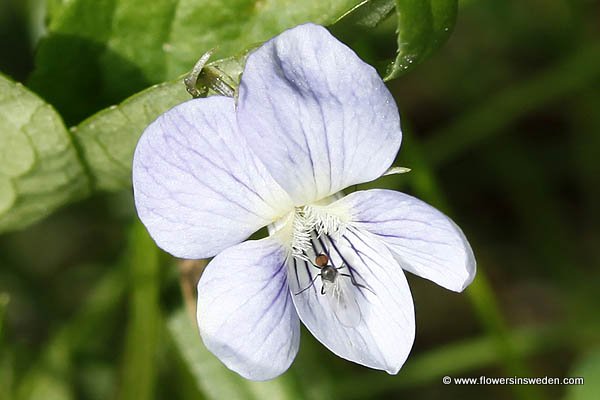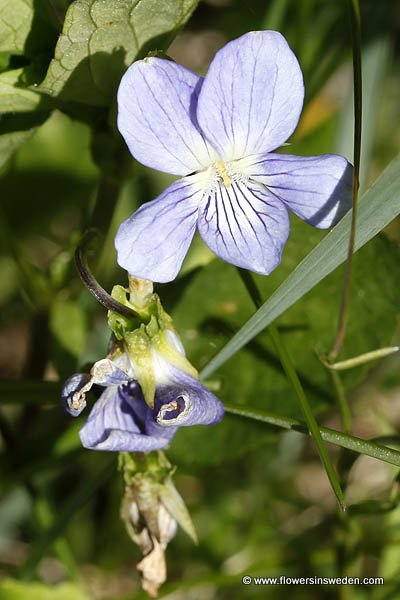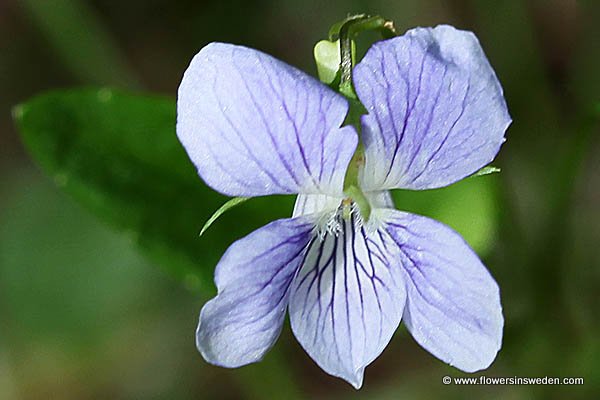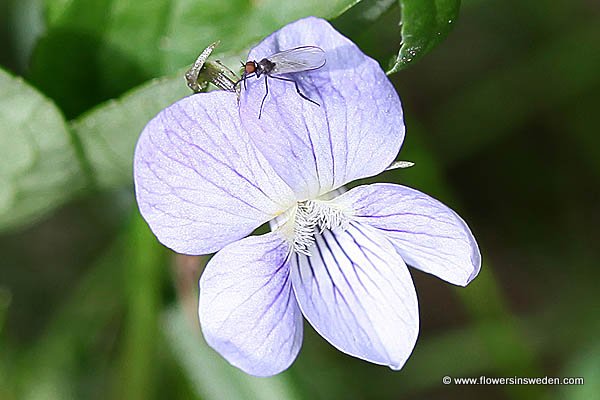
| Scientific name: | Viola canina L. | |
| Synonym name: | Viola montana L. | |
| Swedish name: | Ängsviol, hundviol, norrlandsviol | |
| German name: | Hunds-Veilchen | |
| Nederlandse naam: | Hondsviooltje | |
| English name: | Heath Dog-violet, Heath Violet | |
| Family: | Violaceae, Violväxter |

|
| Life form: | Herbaceous perennial | |
| Stems: | Height 8–40 cm, leafy, limp–ascending–erect, branched–branchless | |
| Leaves: | Basal leaf-rosette absent; leaves ovate to narrowly ovate and longer than broad | |
| Flowers: | Rather broad pale blue petals that are slightly overlapping, two of the petals on the upside and three are on the downside; whitish-yellow spur; unscented flowers | |
| Flowering Period: | May, June | |
| Fruits: | 3-valved capsule | |
| Habitat: | Throughout the country, heaths, fens, and moist woodlands, especially on acidic soils. |

Derivation of the botanical name: Viola, a classical Latin name for violets. canina, of or pertaining to a dog; canine; of dogs; Dog-violet probably suggests that this violet was thought to be inferior to the scented violet. montana, pertaining to mountains.


|